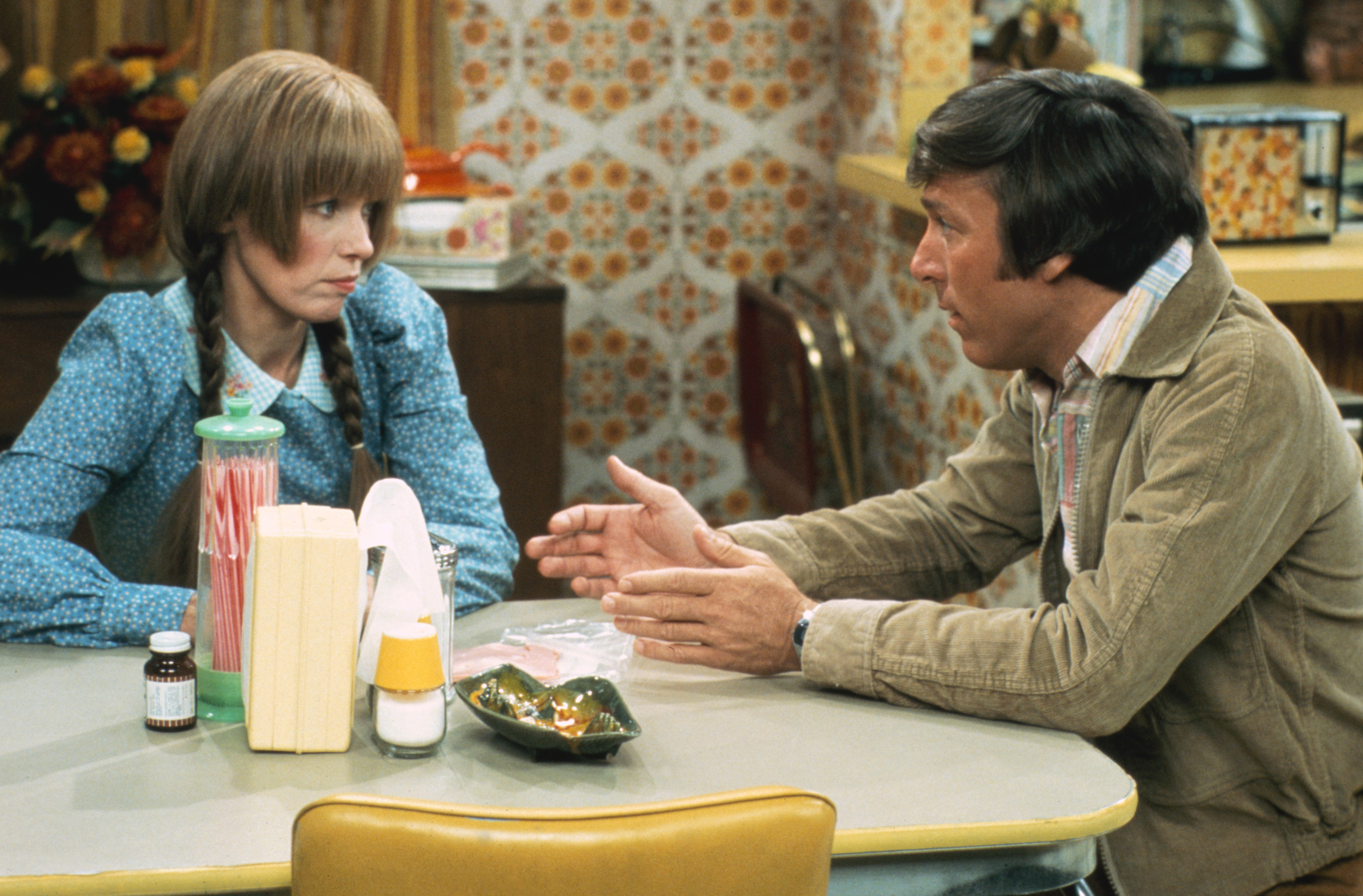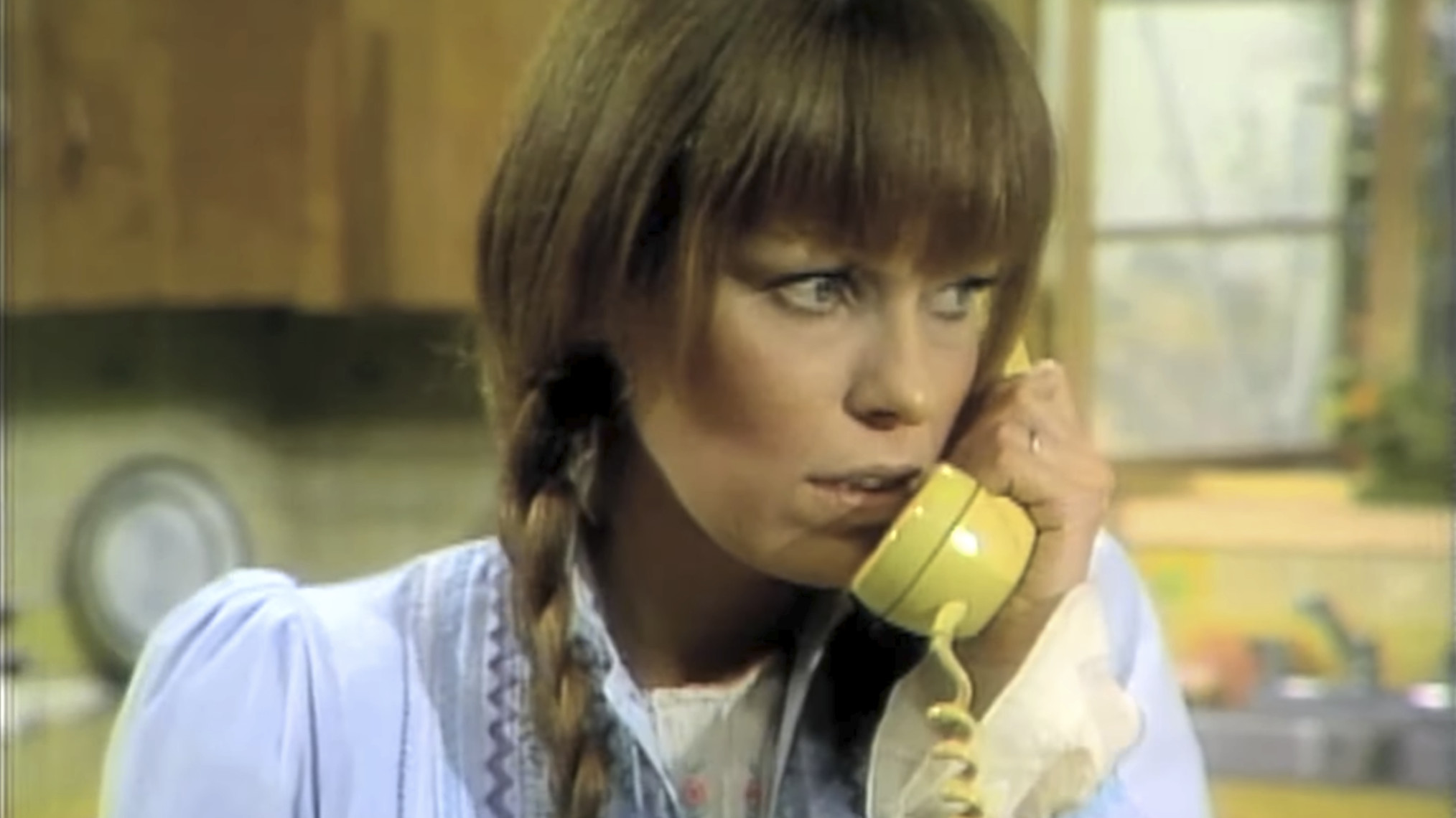Cultural Impact: Mary Hartman Mary Hartman

Mary hartman mary hartman – The groundbreaking sitcom “Mary Hartman, Mary Hartman” made an indelible mark on American television and culture. Its satirical portrayal of suburban life challenged social norms and values, sparking debates and leaving a lasting impact.
In the annals of television history, “Mary Hartman, Mary Hartman” remains an indelible masterpiece. Its quirky characters and surreal storylines captured the zeitgeist of the 1970s. Among the show’s standout performers was Martin Mull, who brought his signature wit and eccentricity to the role of the hapless Earl.
Sadly, Mull’s recent death has left a void in the entertainment world. Yet, his legacy lives on through the enduring popularity of “Mary Hartman, Mary Hartman,” a testament to the show’s enduring impact on American pop culture.
Influence on Social Norms and Values, Mary hartman mary hartman
The show’s frank depiction of topics such as infidelity, sexual promiscuity, and mental illness pushed the boundaries of what was considered acceptable on television. It ignited conversations about changing societal attitudes and the hypocrisy often found in suburban communities.
The sitcom “Mary Hartman, Mary Hartman” was a groundbreaking satire of American soap operas, and one of its standout characters was the eccentric and lovable Reverend Leroy Oglethorpe, played by Martin Mull. Mull was 58 years old when he first took on the role, and his youthful energy and comedic timing brought the character to life.
Even today, “Mary Hartman, Mary Hartman” remains a beloved classic, and Mull’s performance as Reverend Oglethorpe is a key reason why.
- The character of Loretta Haggers, a promiscuous housewife, challenged traditional gender roles and sexual morality.
- The portrayal of Fernwood residents as both superficial and vulnerable highlighted the complexities of suburban life.
- The show’s satirical treatment of religion and politics sparked debates about the role of these institutions in society.
Impact on Language
“Mary Hartman, Mary Hartman” introduced new words and phrases into the American lexicon. The character of Charlie Haggers’ famous catchphrase, “Horny horny horny,” became a symbol of the show’s irreverent humor.
- The show popularized the term “dysfunctional family,” which is now widely used to describe families with significant problems.
- The character of Cathy Shumway’s use of the phrase “I can’t cope!” became a shorthand for expressing overwhelmed feelings.
Satirical Portrayal of Suburban Life
The show’s satirical depiction of suburban life resonated with viewers who saw their own lives reflected in the characters and situations. “Mary Hartman, Mary Hartman” exposed the hidden tensions, insecurities, and absurdities of suburbia, leading to a re-examination of its perceived idyllic nature.
- The show’s use of surrealism and black comedy created a unique and unforgettable viewing experience.
- The characters’ exaggerated personalities and bizarre storylines highlighted the underlying tensions and frustrations of suburban life.
- The show’s portrayal of the Fernwood community as a microcosm of American society allowed viewers to reflect on their own values and beliefs.
Characters and Relationships

At the heart of Mary Hartman, Mary Hartman lies the titular character, Mary Hartman, whose relationships with those around her shape the show’s narrative. Mary’s complex relationships with her husband, family, and lover provide a rich tapestry of human interactions and emotions.
Mary’s marriage to Tom Hartman is a central pillar of her life. Their relationship is strained by Tom’s infidelity and his frequent absences due to his job as a traveling salesman. Despite these challenges, Mary remains devoted to Tom, even as she begins an affair with George Shumway, a local pharmacist.
Mary and Tom Hartman
Mary and Tom’s relationship is a rollercoaster of emotions. They love each other deeply, but their marriage is constantly tested by Tom’s infidelity and his frequent absences. Mary’s affair with George Shumway further complicates their relationship, leading to jealousy and mistrust.
- Mary’s unwavering devotion to Tom, despite his shortcomings.
- Tom’s struggle to balance his love for Mary with his desire for other women.
- The impact of Tom’s absences on their marriage and Mary’s emotional well-being.
- The role of Mary’s affair with George Shumway in the deterioration of her marriage.
Mary and her Family
Mary’s relationships with her family members are complex and often strained. Her mother, Loretta Haggers, is a domineering and judgmental woman who often disapproves of Mary’s choices. Her father, George Haggers, is a passive and ineffectual man who offers little support to his daughter. Her brother, David Haggers, is a troubled young man who struggles with addiction and mental illness.
- The strained relationship between Mary and her mother, Loretta.
- Mary’s attempts to gain her mother’s approval and the challenges she faces.
- The lack of support Mary receives from her father, George.
- The troubled relationship between Mary and her brother, David.
- The impact of David’s addiction and mental illness on Mary and her family.
Visual and Thematic Elements

Mary Hartman, Mary Hartman‘s groundbreaking visual and thematic elements set it apart from other television shows of its era. Its innovative use of symbolism, imagery, and music, combined with its exploration of suburban conformity, consumerism, and the search for identity, created a unique and unforgettable viewing experience.
Visual Style
Visually, Mary Hartman, Mary Hartman was a departure from the glossy, idealized sitcoms of the time. The show’s low-budget aesthetic, with its grainy, washed-out colors and shaky camera work, gave it a raw, almost documentary-like feel. This visual style reflected the show’s focus on the everyday lives of ordinary people, and it helped to create a sense of realism and authenticity.
| Show | Visual Style |
|---|---|
| Mary Hartman, Mary Hartman | Grainy, washed-out colors; shaky camera work; low-budget aesthetic |
| The Brady Bunch | Glossy, idealized; bright, saturated colors; static camera work |
| All in the Family | Realistic, documentary-like; single-camera setup; use of natural lighting |
| Happy Days | Nostalgic, idealized; warm, inviting colors; use of period-specific props and costumes |
Symbolism and Imagery
Mary Hartman, Mary Hartman also made effective use of symbolism and imagery. The show’s opening credits, for example, featured a series of surreal and disturbing images, including a woman being chased by a giant hand and a man being swallowed by a giant fish. These images set the tone for the show’s exploration of the dark side of suburban life.
Throughout the series, Mary Hartman, Mary Hartman used symbolism to explore themes such as conformity, consumerism, and the search for identity. For example, the character of Mary Hartman was often shown wearing a pink dress, which symbolized her conformity to societal expectations. The character of Loretta Haggers was often shown eating junk food, which symbolized her addiction to consumerism. And the character of Charlie Haggers was often shown searching for his identity, which symbolized the show’s exploration of the search for meaning in life.
Music
Music played a vital role in Mary Hartman, Mary Hartman. The show’s theme song, “Fernwood Tonight,” was a catchy, upbeat tune that belied the show’s dark and satirical content. The show also used music to create a sense of atmosphere and to underscore the emotional moments. For example, the show often used suspenseful music to create a sense of tension, and it often used sentimental music to create a sense of pathos.
Themes
Mary Hartman, Mary Hartman explored a wide range of themes, including suburban conformity, consumerism, and the search for identity. The show’s exploration of these themes was often satirical and darkly humorous, but it also had a serious undercurrent. The show’s creators believed that suburban life was not as idyllic as it seemed, and they used Mary Hartman, Mary Hartman to expose the dark side of the American Dream.
One of the most important themes explored in Mary Hartman, Mary Hartman was suburban conformity. The show’s characters were all under pressure to conform to the expectations of their community. This pressure led to a number of problems, including unhappiness, alienation, and even violence. The show’s creators believed that suburban conformity was a destructive force, and they used Mary Hartman, Mary Hartman to warn viewers about its dangers.
Another important theme explored in Mary Hartman, Mary Hartman was consumerism. The show’s characters were constantly bombarded with advertising, and they were encouraged to buy more and more things. This consumerism led to a number of problems, including debt, environmental destruction, and a loss of community. The show’s creators believed that consumerism was a destructive force, and they used Mary Hartman, Mary Hartman to warn viewers about its dangers.
Finally, Mary Hartman, Mary Hartman explored the theme of the search for identity. The show’s characters were all searching for their place in the world. This search led to a number of problems, including confusion, frustration, and even despair. The show’s creators believed that the search for identity was a lifelong journey, and they used Mary Hartman, Mary Hartman to explore the challenges and rewards of this journey.
The enigmatic Mary Hartman, a character from the beloved soap opera “Mary Hartman, Mary Hartman,” has a captivating allure that transcends time. Her enigmatic persona and complex relationships resonate with audiences today, much like the dysfunctional Bluth family in the acclaimed comedy series Arrested Development.
Both shows explore the complexities of family dynamics, societal expectations, and the search for meaning amidst the absurdity of life, leaving an indelible mark on the hearts of their devoted fans.
Mary Hartman, Mary Hartman, the iconic soap opera that satirized American suburbia in the 1970s, featured a cast of memorable characters, including the eccentric and lovable Fred Willard. Willard , known for his deadpan delivery and quirky humor, played the role of Reverend Bob Hartley, a well-meaning but often clueless clergyman who provided comic relief throughout the show’s run.
Mary Hartman, Mary Hartman remains a beloved classic, and Willard’s performance as Reverend Hartley is a testament to his comedic brilliance.
In the realm of iconic soap operas, “Mary Hartman, Mary Hartman” stands tall, its satirical brilliance mirroring the absurdity of suburban life. Yet, amidst the housewives and adulterers, there lies a hidden connection to the rugged world of “The Ranch.” As the Harts’ domestic dramas unfolded, their neighbor, Earl, dreamed of a life far removed from the suburban cul-de-sac, a life where horses roamed and the open range stretched as far as the eye could see.
In his heart, Earl yearned for the freedom and adventure that only the ranch could offer, a stark contrast to the artificiality of Fernwood. And so, “Mary Hartman, Mary Hartman” became a poignant tale of dreams and the search for meaning, both within the confines of suburbia and beyond its manicured lawns.